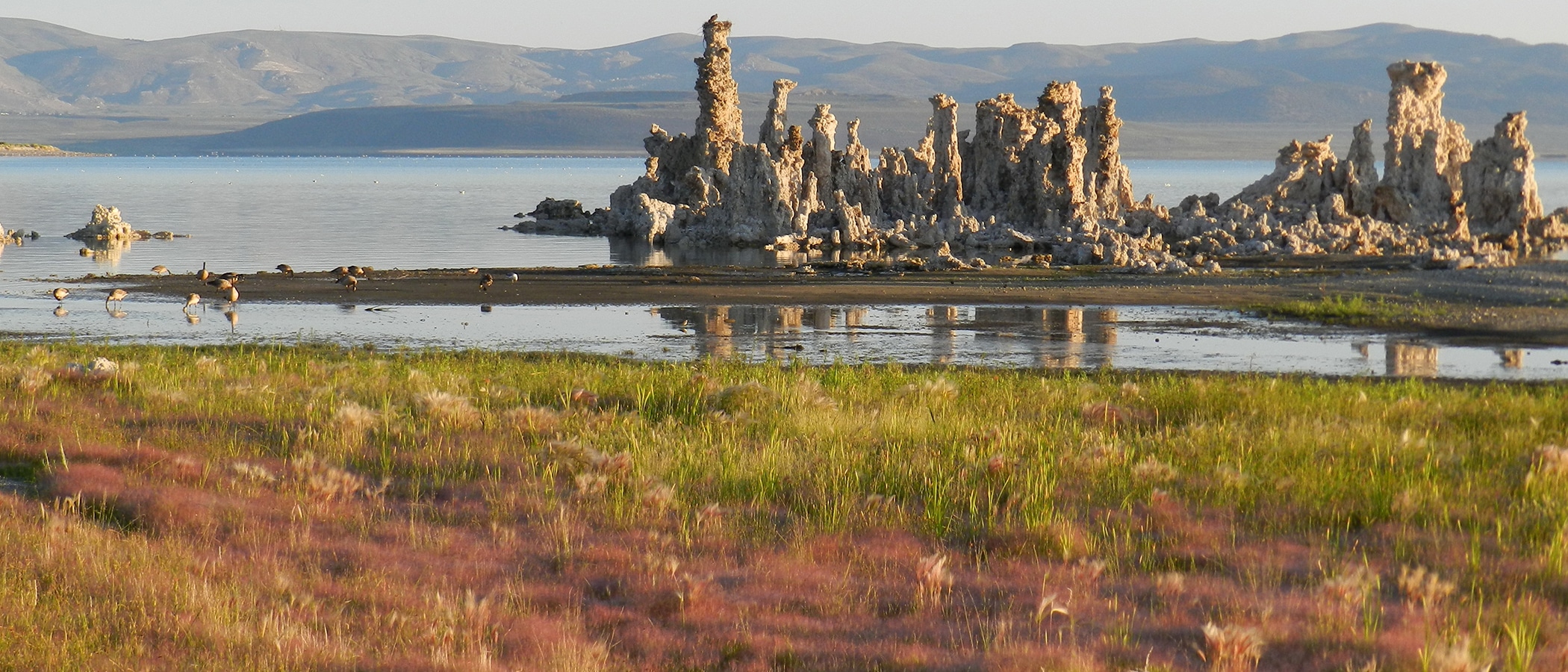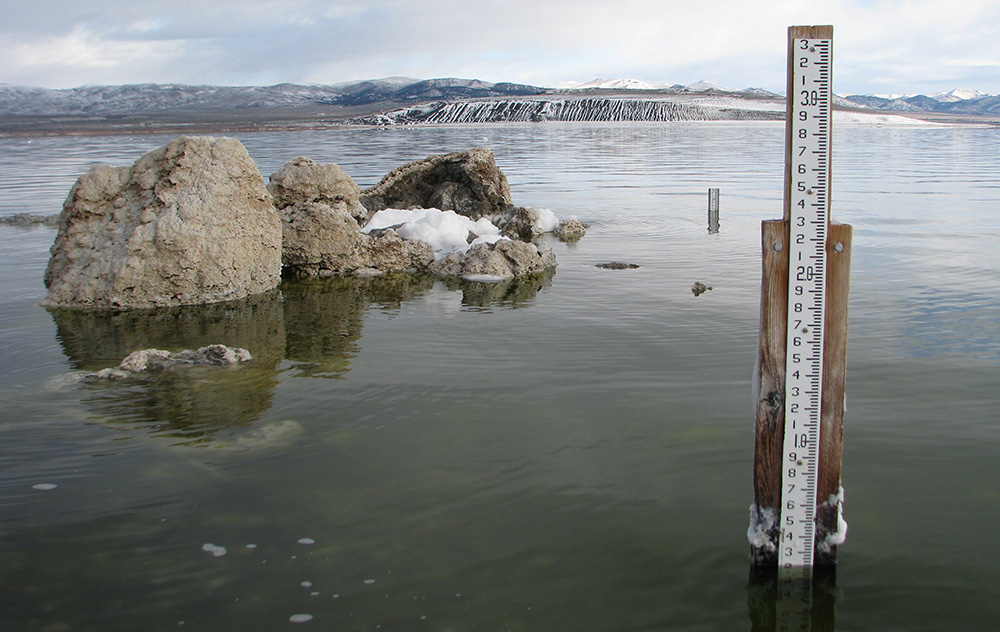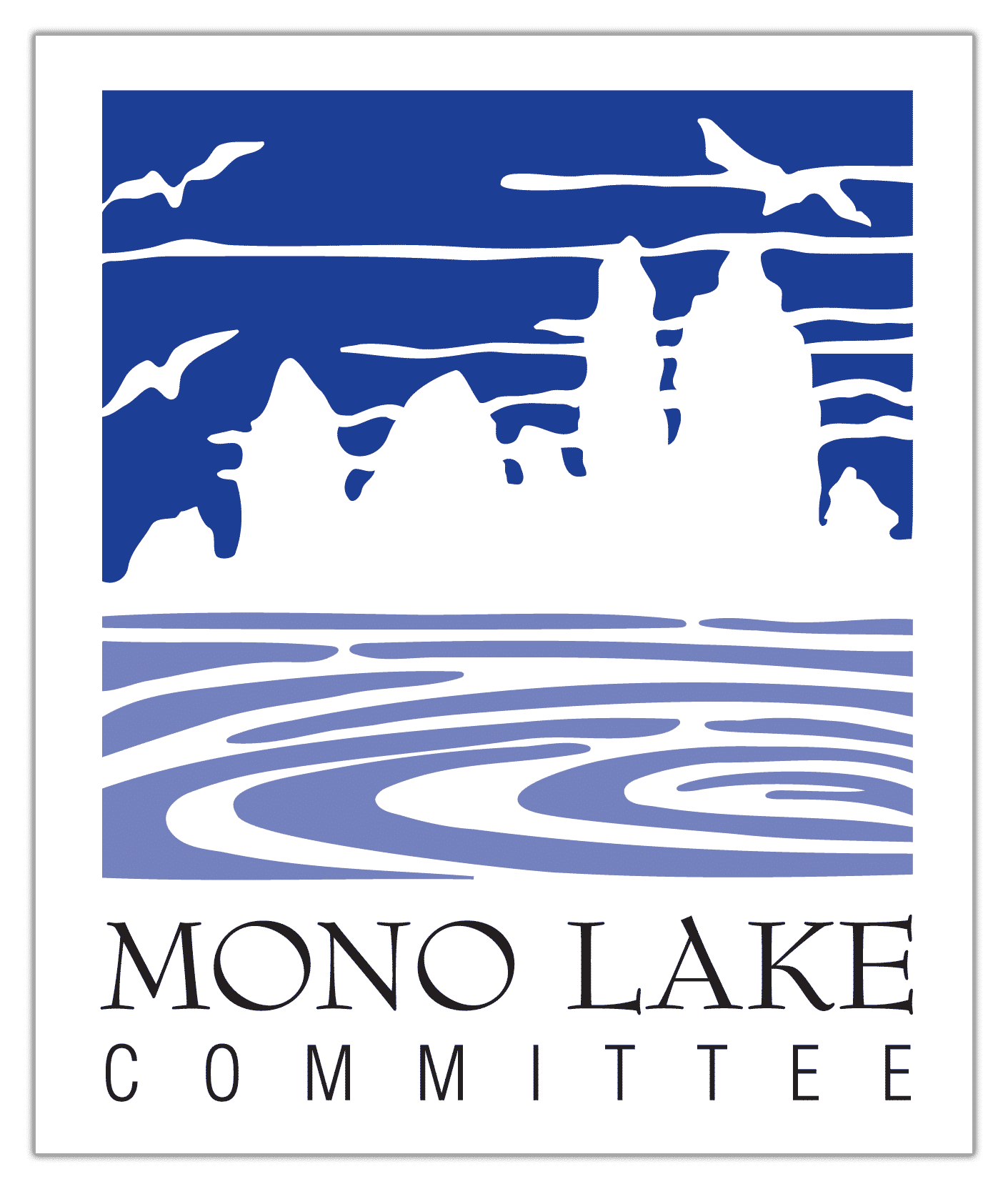
After a nearly four-year absence, winter has made an appearance in the Mono Basin, but it has not met expectations of a very strong, “Godzilla” El Niño.

In Lee Vining we have enjoyed the full spectrum of winter weather: freezing fog, snow, rain, and cold temperatures. We have experienced something much closer to a normal winter, and after four years of well-below-normal winters, we are easily impressed by even a little bit of snow. While the psychological bar is very low, the true measure of winter for Mono Lake is in the water content of the Sierra snowpack and the eventual runoff—these numbers tell the real story.
Much of the Mono Basin remains a bit below-average in terms of precipitation, and the snowpack in the Rush Creek drainage remains lackluster. Gem Pass, as of February 1, is at 80% of normal. This data point is particularly important since this is the bellwether snowpack measurement above Mono Lake’s largest tributary stream, Rush Creek.
The current, powerful El Niño is having oceanic and atmospheric impacts around the world. However, for large parts of California, “Godzilla” has yet to impress. The character and trajectory of recent winter storms has favored neither the Mono Basin nor the Eastern Sierra. Past, significant El Niño events (1983 and 1998) were delivering well above average snow over the Sierra by early February, and in Los Angeles precipitation was climbing toward a 30+ inch year. To date the city has logged just over 5 inches of rain, and Mono Basin snowpack is 90% of normal. After four years of record drought, numbers like this inspire an utterance of “meh.”
While the winter will not rescue us from the effects of long-term drought, there is still time for El Niño to deliver a robust winter. If fortune is in the jetstream, the title of this article will be woefully inaccurate by the time you read it in print.
This post was also published as an article in the Winter & Spring 2016 Mono Lake Newsletter (page 4).

Thank you for your update. Much appreciated. We will be up to the US this September and will visit you there at Mono Lake. John and Lesley
What would the level be on the measuring device we see in the lake picture above be if it were a “normal” winter? And how much did it rise so far this winter?
Jean,
It largely depends. Winter temperatures and warm/cold storms can have a big impact on winter lake level. It’s possible to have a very cold winter with a lot of precipitation in the high country and see very little upward change in lake level until spring.
A warm winter and/or frequent storms that overwhelm the rain shadow can make the lake rise 1-2 feet over the winter.